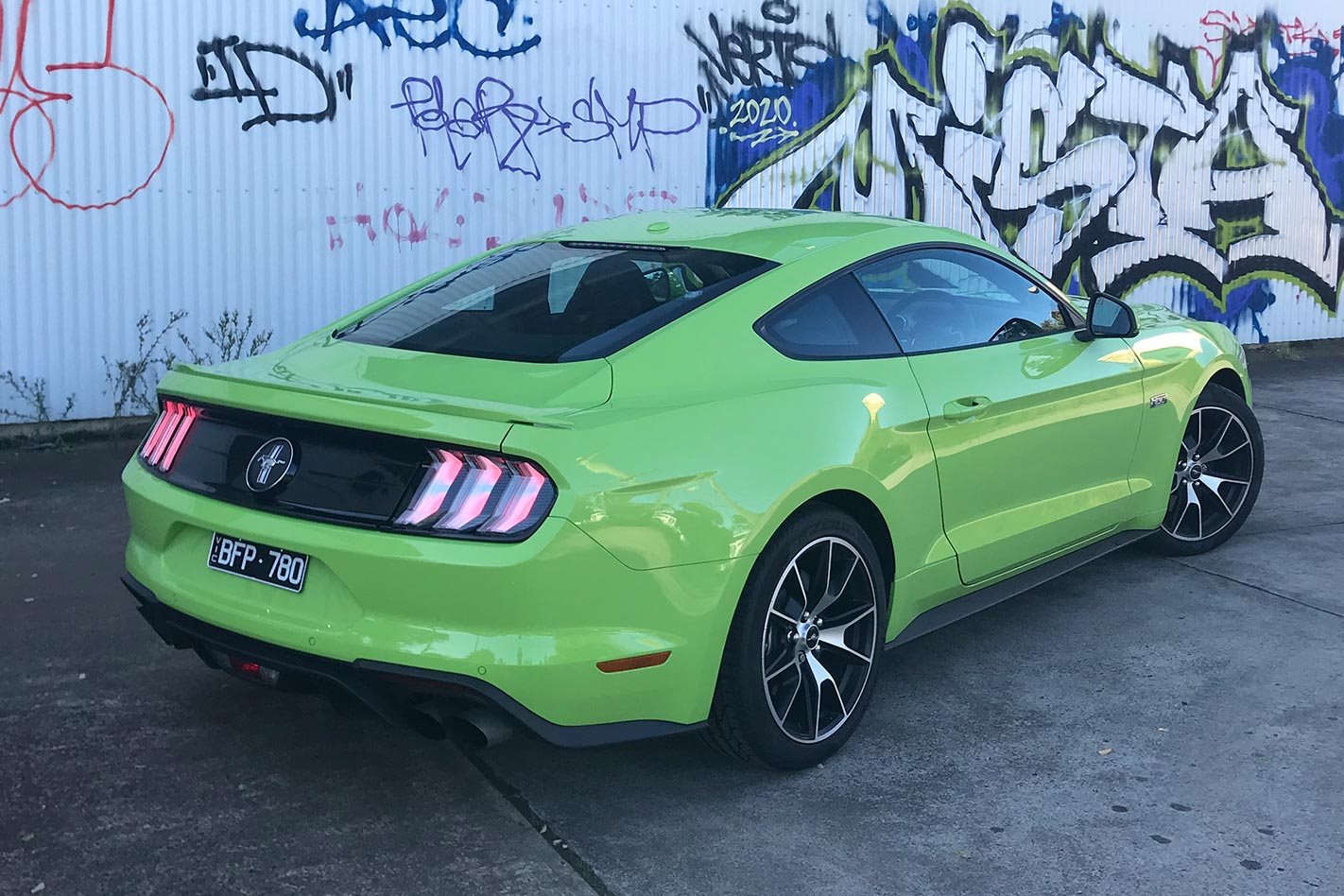- Introduction: Boost Scootin’
- Month 2: Hitting the Road
- Month 3: Race Horse
- Month 4: Swap Meet
- Month 5: Horse Play
- Month 6: Green Party
Introduction: Boost Scootin’
Shakespeare wrote: “A rose by any other name would smell as sweet.” But what if the rose kept its name, looked the same but smelled totally different? That’s always been the conundrum of the four-cylinder Mustang.
It looks like a Mustang and feels like a Mustang, but the crucial ingredients of a muscle car, the grunt and the noise – aka the sweet smell of a rose – has always been conspicuous in its absence.
In an attempt to rectify this there is now the 2.3L High Performance, which replaces the Ecoboost as the four-cylinder choice in the MY2020 Mustang line-up.
To see if it’s worthy we’ve welcomed a manual 2.3L HP to the MOTOR stable for the next few months, which will then become a GT – with perhaps a quick fling in an R-Spec – to cover off the entire ’20 range.
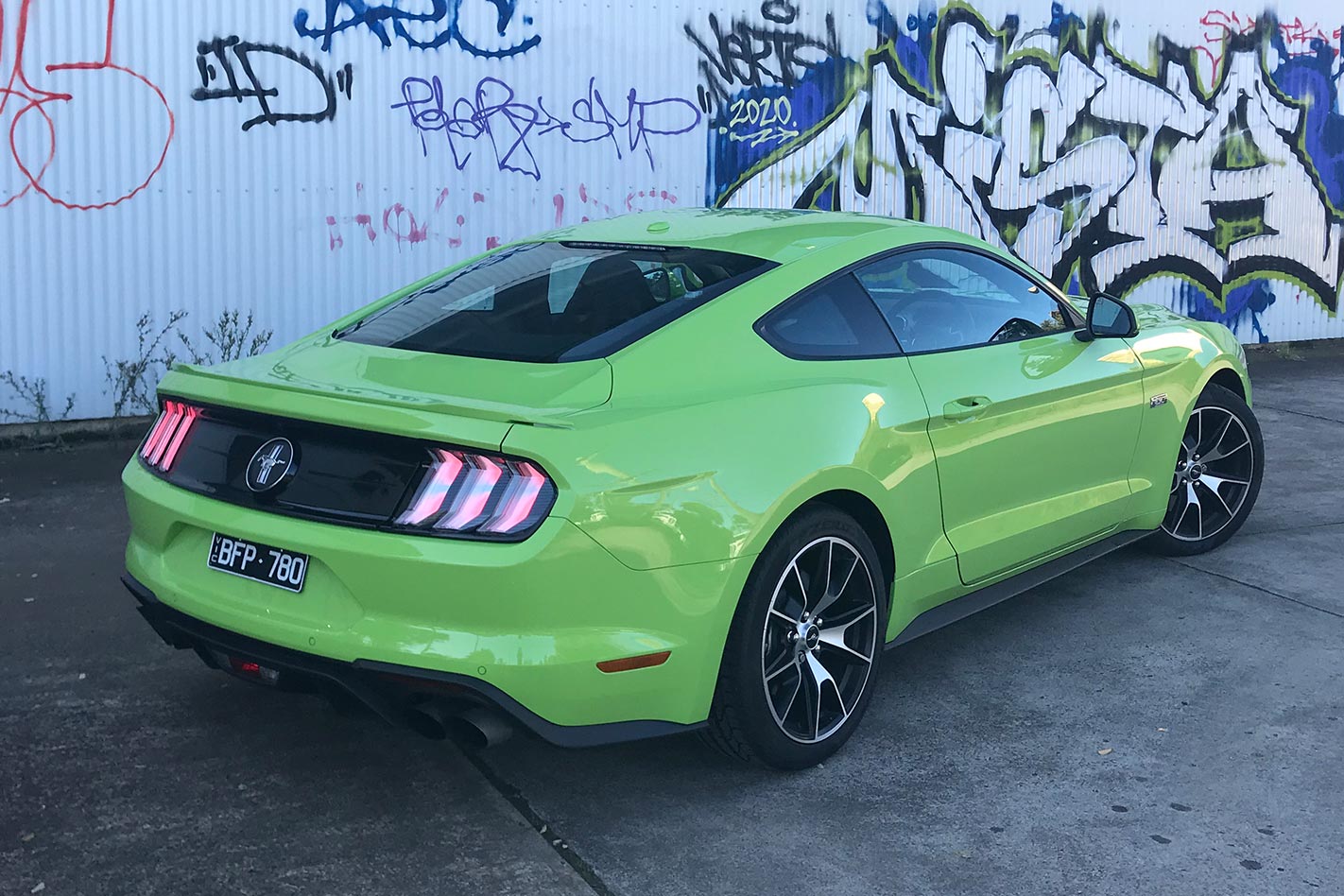
Changes for 2020 are very minor: four new colours – Iconic Silver, Red Hot, Twister Orange and the Grabber Lime you see here – and the option of a Black Shadow Pack ($1000) which adds bonnet and side stripes, 10-spoke wheels and darkens the grille and guard badging.
More importantly, all new Mustangs come with a five-year/unlimited-kilometre warranty and fixed-price servicing, the first four services costing $299 apiece.
Ford unveils all-electric, six-speed manual Mustang at SEMA 2019
The 2.3L HP began as an after-hours project among a few Ford Performance engineers who wondered what a Mustang would be like with a Focus RS engine.
Pretty good, apparently, as just 10 months later the most serious four-cylinder Mustang since the 1985 SVO was born. On paper the performance boost is modest, outputs rising from 224kW/441Nm to 236kW/448Nm, but there’s more to the story.
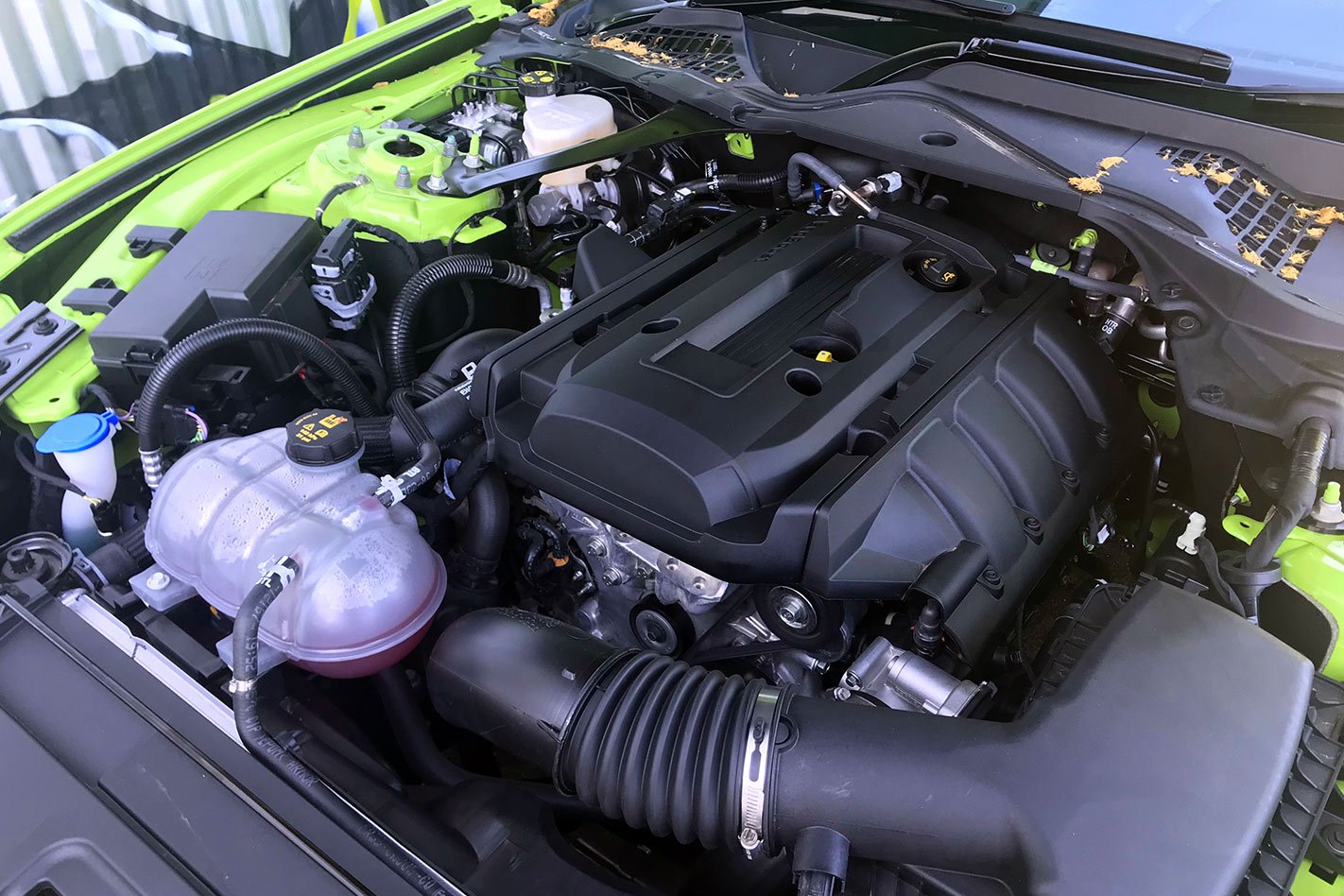
A drop in compression ratio from 9.5 to 9.37:1 allows the five per cent larger turbo to work harder resulting in a wider power band. Whereas beforehand maximum power was produced at a lowly 5700rpm the new peak arrives at 6200rpm and at least 400Nm is available between 2500-5300rpm.
The rev limit is 6800rpm in short bursts, though 6500rpm continuously. Ford claims 0-60mph (97km/h) in the “mid four-second range on premium fuel” which is outrageously optimistic, but we’ll strap the timing gear on to discover the true figures in a future update.
Helpfully, the chassis has had a thorough going-over, too.
An alloy strut tower brace stiffens up the front end, brakes are lifted from the standard GT – 352mm discs and four-piston calipers up front rather than the 380mm discs and six-piston calipers of the Performance Pack-spec Aussie GTs, combined with 330mm discs and single-piston calipers at the rear.
The front bar improves brake cooling and reduces front-end lift. The 2.3L HP is 65kg lighter than its V8 sibling at 1705kg, which is distributed 53/47 front-to-rear.

Wheels are 19 by 9.0-inch front and rear but wrapped in Pirelli P Zeroes rather than the GT’s Michelin Pilot Sport 4 S.
There’s an optional “Ecoboost Handling Package” available Stateside which local HPs score half of; a larger 24mm anti-roll bar (up from 21.7mm, itself an upgrade from the standard Ecoboost’s 20mm) and shorter 3.55:1 diff ratio (3:31 standard) make the grade, but the wider 9.5-inch wheels with 265/40 Pirelli P Zero Corsa4 tyres do not.
There are a few options available and our test car has the works: MagneRide adaptive dampers, Recaro seats and the body colour pack, which deletes the grey bonnet stripes and reverts the rear spoiler and mirrors to, funnily enough, body colour.
It’s a good looking car, the nickel-finish wheels providing a subtly different look to the GT.
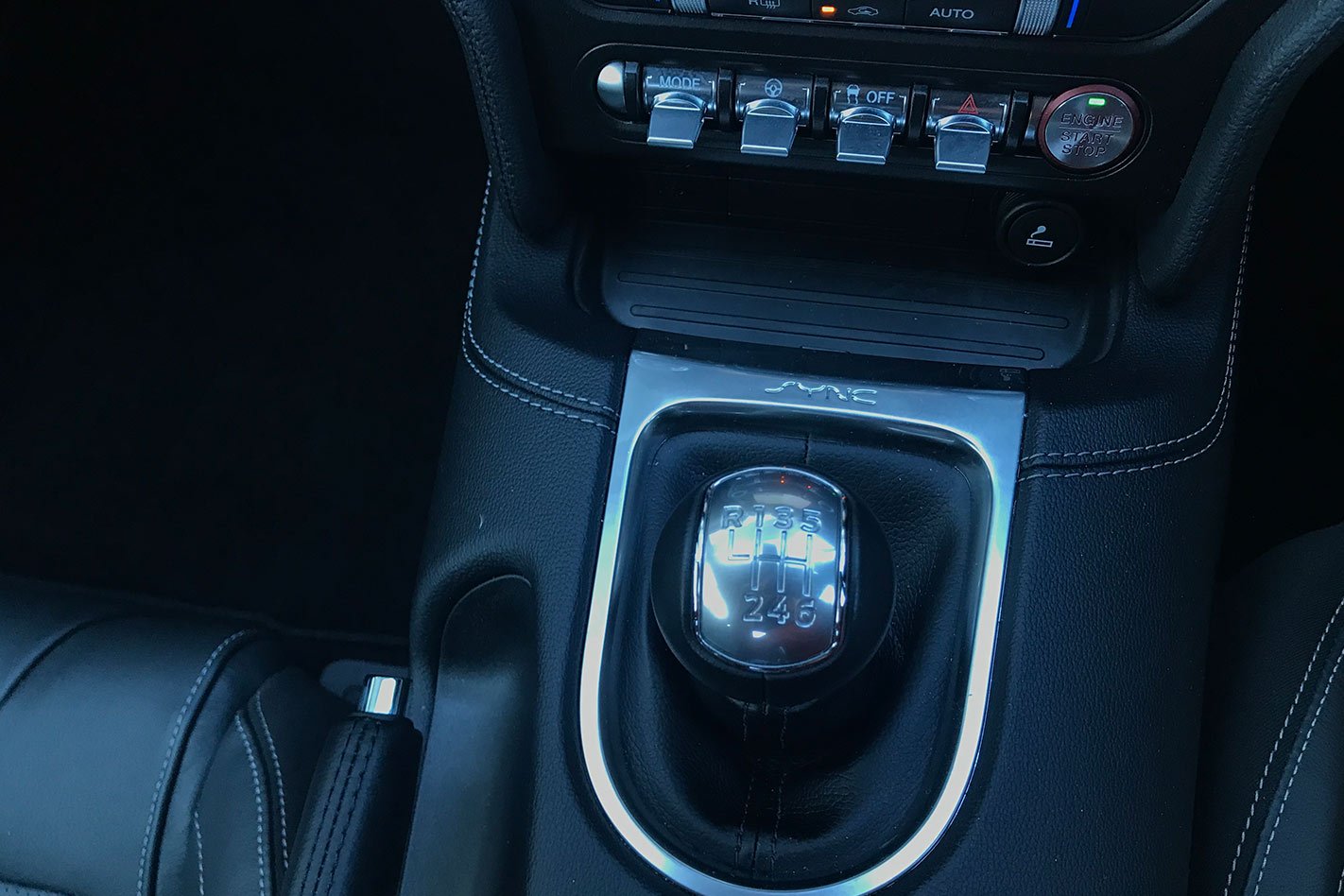
You don’t miss out on any equipment for forgoing the V8, quite the contrary. There’s the same 8.0-inch touchscreen with SYNC3 infotainment and smartphone mirroring, 12-speaker 1000w B&O stereo, 12-inch digital instruments, dual-zone climate control, eight airbags, adaptive cruise, auto high-beam, auto emergency braking and tyre pressure monitoring.
Heated and cooled seats are standard, but selecting the Recaros deletes this capability. You even get a couple of small items missing from the GT, most notably the pony projection lights that shine the Mustang logo onto the ground as you step out of the car.
A small touch, but a nice one.
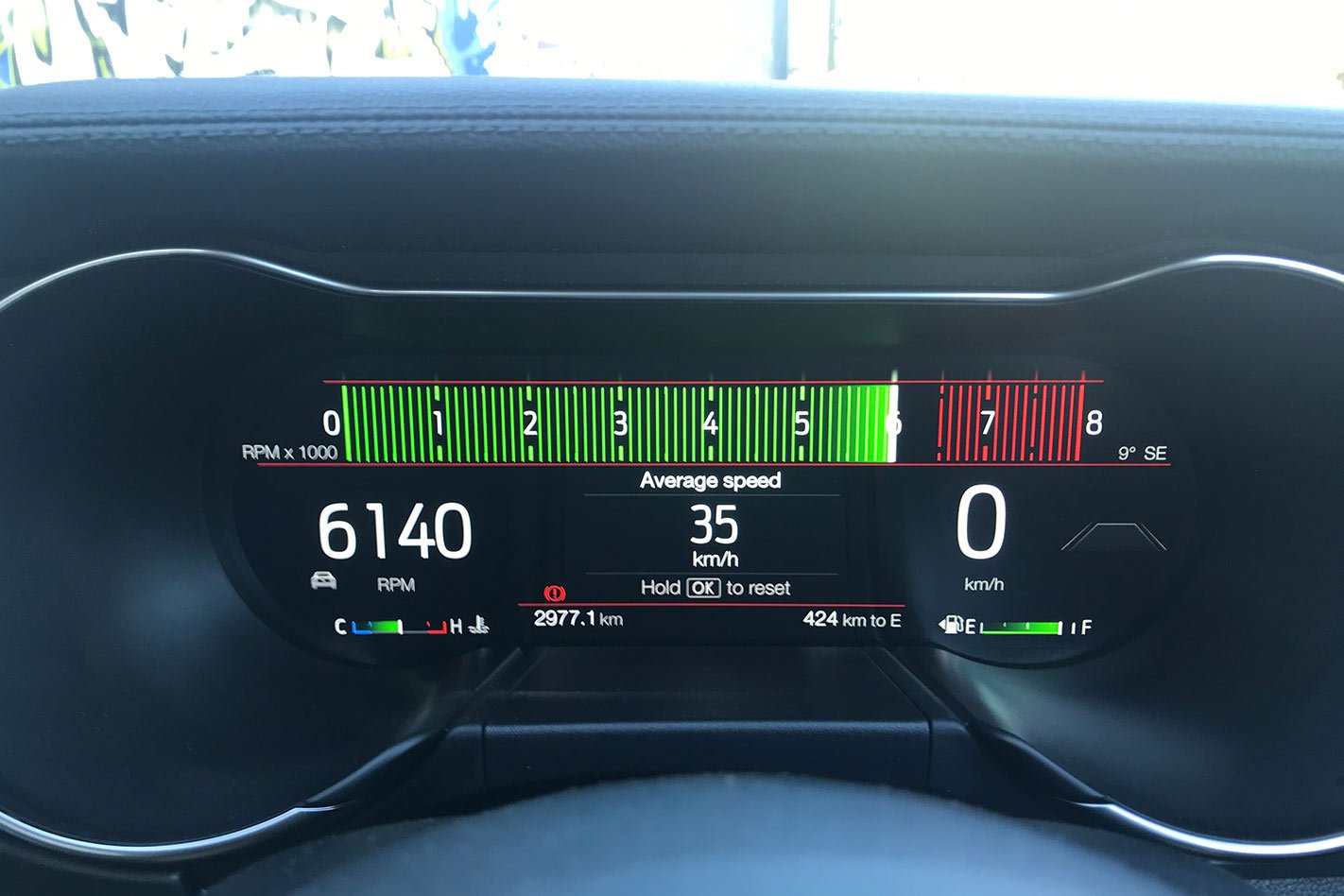
The question is whether this thorough makeover has made the four-cylinder Mustang a viable alternative?
The next couple of months will provide the answer, on road, drag strip and track, while the immediate switch to the V8 big-banger will be the perfect reference point. Will the 2.3L High Performance prove to be a rose, or more of a thorn?
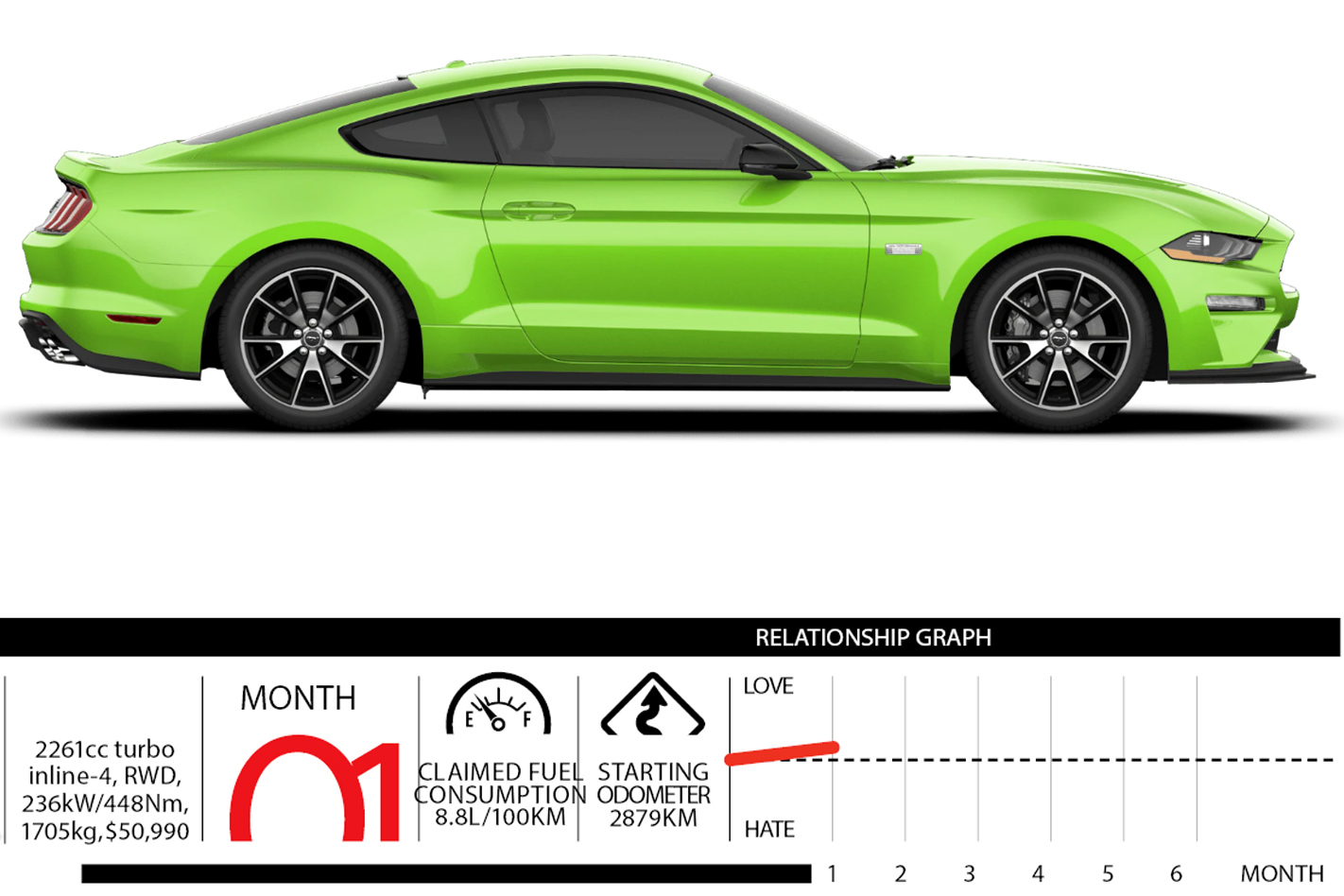
2020 Ford Mustang 2.3L HP Pros & Cons
Things we’re loving
1. Good looks 2. Lotsa kit 3. Great ride
Things we’re rueing
1. Dull sound 2. Steering feel 3. Seems thirsty
Month 2: Hitting the Road
First driving impressions of our force-fed filly
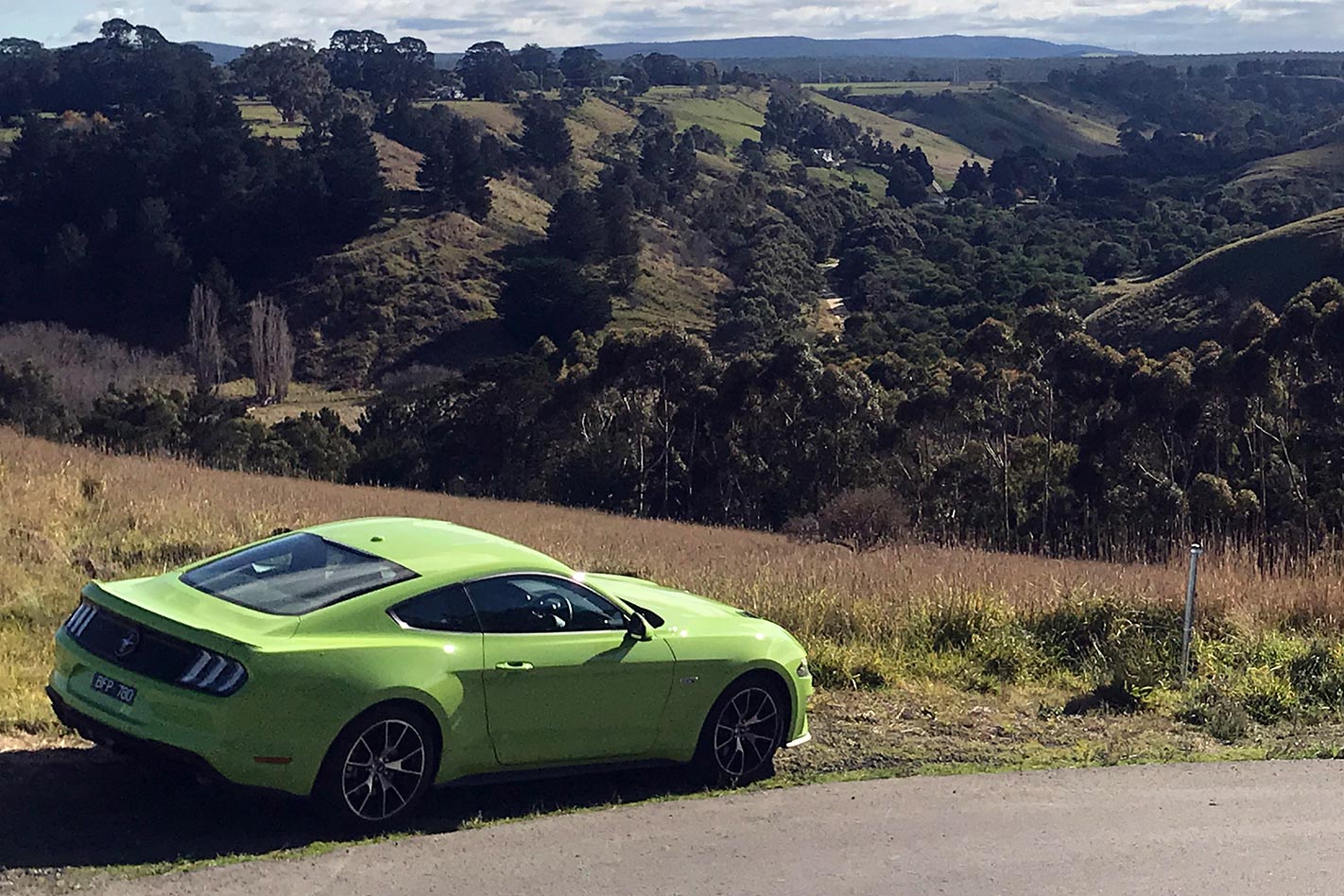
Two doors. Rear-drive. Turbo four-cylinder engine. Six-speed manual. 119kW/tonne. These attributes don’t describe our Mustang 2.3 High Performance long-termer but the venerable Nissan S15 200SX (nee Silvia), the car that knocked off the Porsche (996) 911 Turbo to win MOTOR’s 2001 Performance Car of the Year title.
Of course, the first four attributes also apply to the Mustang, but it ups the ante with a beefy 138kW/tonne. Given its impressive spec sheet, so close to one of the revered rear-drive coupes of all time, why do so many look down on the four-cylinder Mustang?
Of course, the 2.3 HP might have everything it needs to be a great driver’s car, but how the bits go together is just as important as the bits themselves.
This isn’t to suggest the four-cylinder Mustang should be considered the next evolution of the S15, for while it produces a hefty 89kW/183Nm more than the iconic Nissan, there’s also the small matter of an extra 450kg or so and it’s this heft that defines the driving experience.
If you desire razor-sharp dynamics then the Mustang (any Mustang, really) isn’t the car for you, but that’s just about setting expectations.
The combination of the substantial mass and relatively soft suspension makes for reasonable weight transfer and a slight delay in response to your inputs, especially on quick changes of direction.
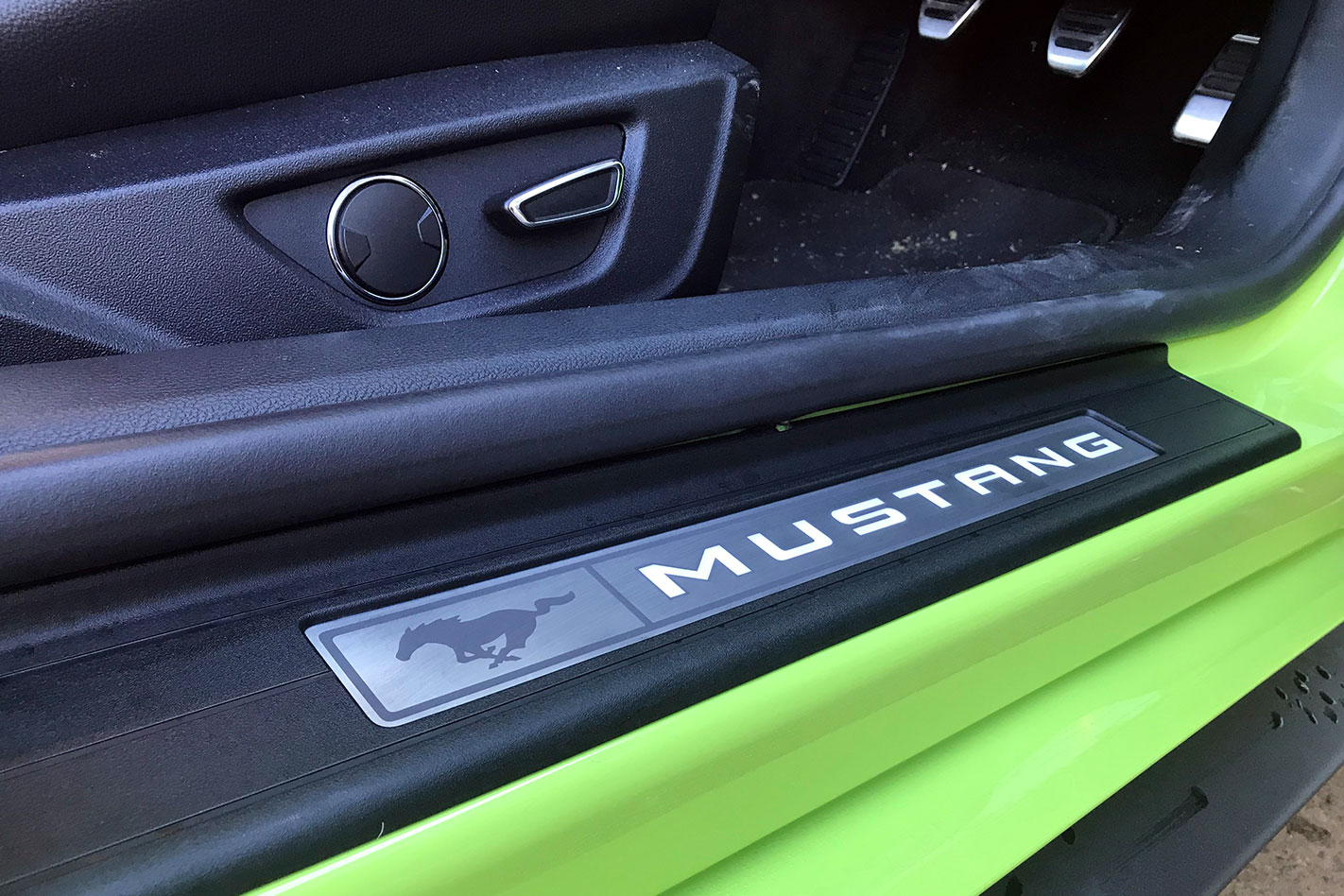
Those inputs require a little bit of guesswork, too, as the steering is probably the Mustang’s weakest point; it’s okay, but a little vague around the straight-ahead and doesn’t provide much communication as lock is applied and loads increase.
Another steering quirk: drive in Normal mode and you can select varying degrees of “steering feel” (actually steering weight) but select one of the sportier modes and “steering feel selection is not available”.
Basically, you can make the steering heavier if you want to, but not lighter. Thankfully Sport Plus or Track doesn’t turn the steering into a syrupy mess.
It’s still relatively easy to drive the Mustang hard as its fundamental balance is decent and while the Pirelli P Zeroes don’t offer the same purchase as the Michelin Pilot Sport 4 S tyres on the V8 models, they still do a good job of holding on to the tarmac.
The body movement that’s a result of the cushy set up exhibits more control than the previous Ecoboost, which was soft enough to move around on corner entry without being powerful enough to do the same on corner exit. Kind of the opposite of what you want.
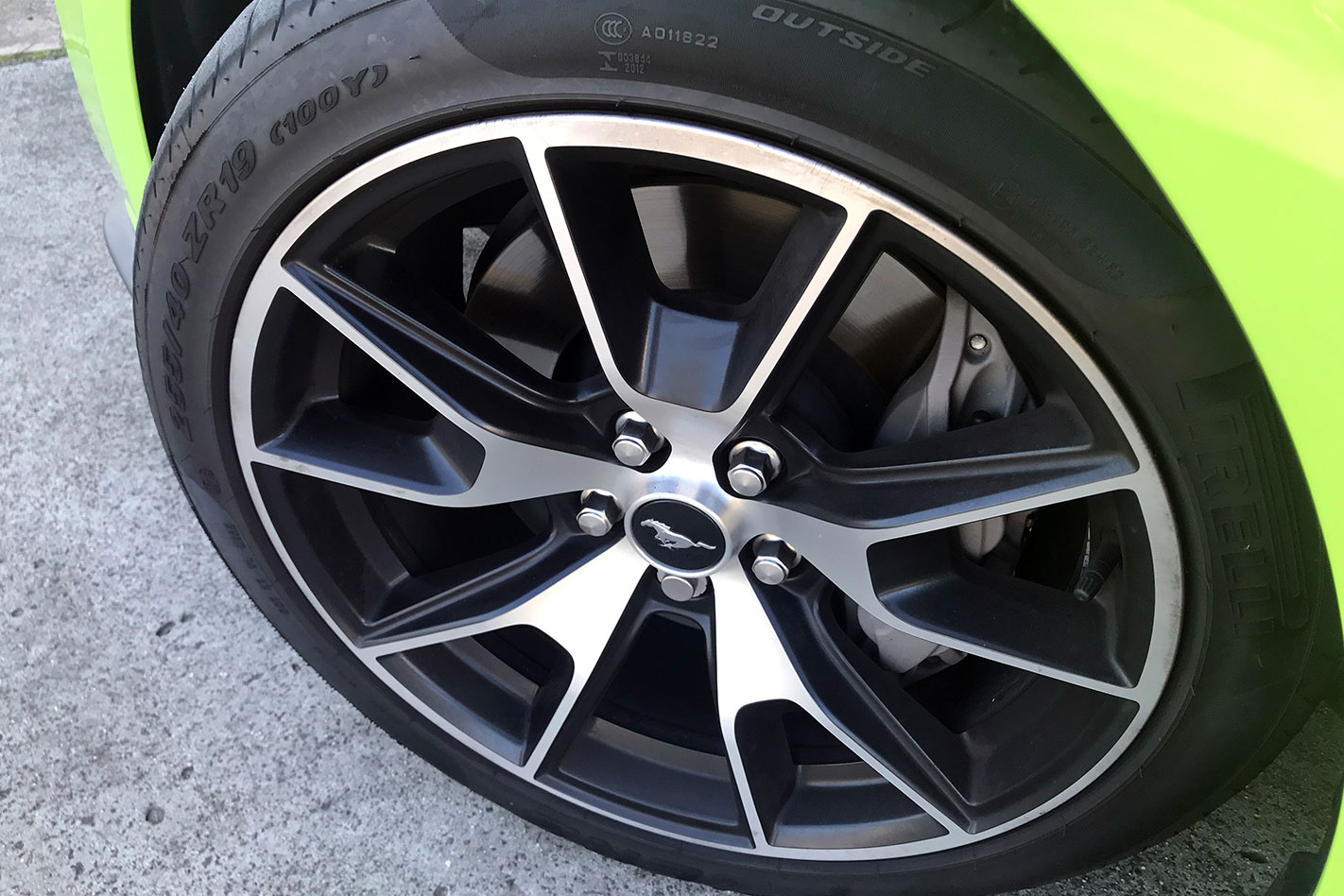
As mentioned last month, the headline figures of the 2.3-litre turbo four-cylinder haven’t improved much, just an extra 12kW/7Nm, but the wider torque band makes it feel markedly more potent.
The rears will now spin on a slippery surface in a straight line in the first two gears and the throttle can be used to influence the behaviour of the car, giving the turbo Mustang a welcome injection of involvement.
If you’re test driving a 2.3 HP, whatever you do try it in Sport Plus mode before making a decision as it transforms the experience.
The throttle in Normal is doughy and lethargic, the engine almost feeling to hesitate at certain points in the lower rev range – careful tuning to meet emissions regs? Regardless, a flick to Sport Plus smartens things up nicely.
It still doesn’t sound too inspiring – the Focus RS-style overrun theatrics of the MY18 Ecoboost have sadly disappeared – but throttle response is now crisp enough that heel-toe downchanges require little more than a roll of the ankle and revs build smoothly. The six-speed manual is the same as in the V8 but the gearing works far better with the turbo four, but more on that next month.

The excellence of the Sport Plus powertrain mode provides another conundrum. I find myself wanting to use it all the time but because it also firms the MagneRide suspension
I’m still in two minds. The ride isn’t bad in Sport Plus, about what you’d expect from a hot hatch, but there’s a pleasant compliance in Normal that has the 2.3 HP gently bobbing through bumps.
The solution seems to be to cop a bit of pitter-patter around town in return for the sharper engine and then engage normal on the highway for added comfort.
Of course, the ability to mix and match these settings – the Mustang even has a customisable ‘MyMode’ but it’s not used for this purpose – would solve this problem. Overall, the 2.3 is proving an enjoyable daily drive but next month we’ll find out if it deserves its ‘High Performance’ moniker.
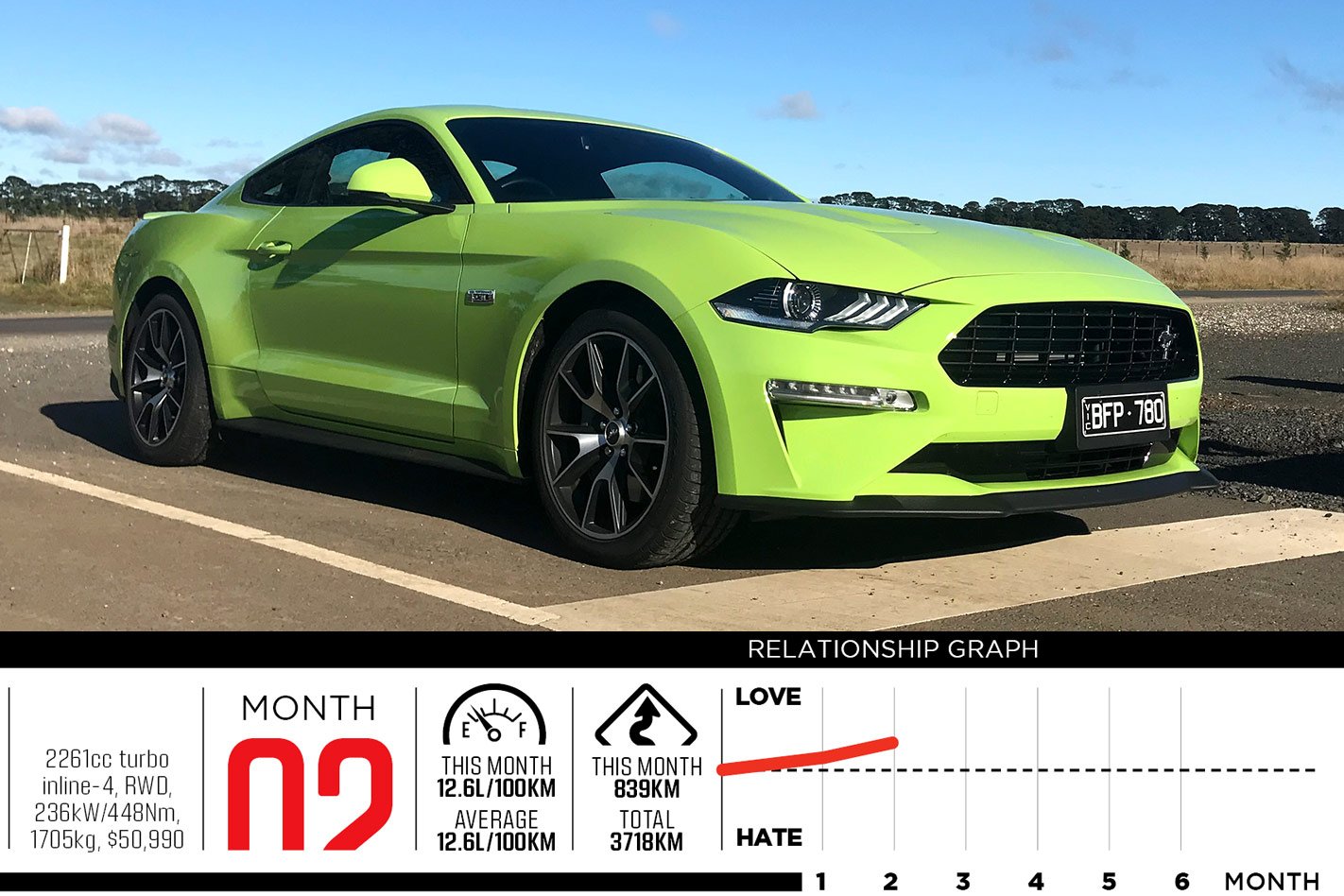
Things we’re loving
- Sport Plus mode
- More throttle steer
- Easy to heel-toe
- Mode inflexibility
- Steering
- It’s no S15
Month 3: Race Horse
Can this four-pot Pony justify its ‘High Performance’ tag?

The relationship between the Mustang 2.3 High Performance and I has been progressing well. As mentioned last month, in day-to-day duties it’s a winner, but that isn’t enough. Truth be told, if all you wanted was a good-looking Mustang for the occasional squirt the old Ecoboost was fine.
The new name raises expectations. If you’re going to call a car ‘High Performance’ then it seems reasonable to expect a better-than-average level of competence when driven hard.
This brings us to Sandown Raceway in Melbourne’s south-east suburbs, where Evolve Driving has managed to thread the needle between lockdowns and hold a track day.
Racetracks haven’t traditionally been kind to the Ecoboost Mustang, the keen chassis only making the lack of grunt more frustrating.
Dark clouds are gathering today, heavy with the promise of precipitation, but thankfully the first session is dry. While the High Performance moniker raises expectations, it’s also important to be realistic with them; this a 1700kg $50K four-cylinder coupe, so it’s not going to be a Porsche Cayman GT4 and viewed in that light it’s pretty handy on track.
You’re not going to step out of it fizzing with adrenaline but it’s fast enough to be interesting, accurate enough to be entertaining and has sufficient stamina to handle multiple hard laps.
Sandown has three big stops in quick succession into turns nine, 11 and one yet the 2.3 HP is happy to do three quick laps with no brake fade.
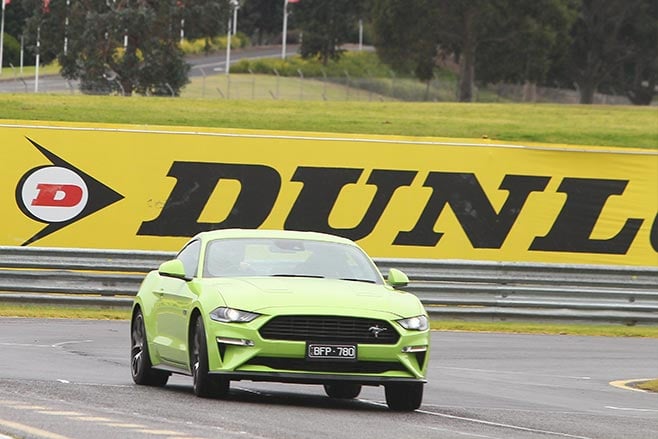
Okay, it’s still not the fastest thing in a straight line but speeds of 190km/h on each of the straights isn’t anything to be sniffed at. However, the torque band that works so well on the road feels flat on track.
Whereas on the road you’re constantly in its 2000-4000rpm happy place on track that naturally shifts to 4000-6500rpm and despite the larger turbo the Mustang’s 2.3 has done its best work by 5700-5800rpm. Peak power is claimed to stretch to 6200rpm but it feels to plateau before then.
It’s purely an enjoyment thing; it’s simply more fun extending an engine to redline, even if dealing with an instantaneous dollop of mid-range is arguably more effective. That said, the gearing works perfectly with the 2.3’s power band.
It’s exactly the same gearbox as the V8 and the 2.3 HP shares the same diff ratio, too, but whereas the higher-revving V8 is geared to the moon the four-pot allows more frequent use of sweet, accurate shift.
As on the road, the key factor that makes the 2.3 HP fun is that it now has enough grunt to tax the chassis.
This is especially the case as the rain arrives. I’ve heard stories of how Sandown’s patchwork surface turns dicey in the wet and quickly earn first-hand experience, turns two, three and four not so much dicey as icy, the Mustang understeering and oversteering simultaneously even with a cautious approach.
Thankfully, the rest of the lap is more consistent and driven sensibly the 2.3 HP hooks up nicely while a more aggressive approach swings the tail out wide in true rear-drive fashion. The Track Mode ESP works brilliantly; it’s one of the better systems around for hot lapping.
The wet conditions also improve the Mustang’s balance in a sense. You tend to drive just below the limit of grip in the wet so the chassis feels more neutral, whereas if you’re really leaning on the tyre in the dry the front end can push wide.
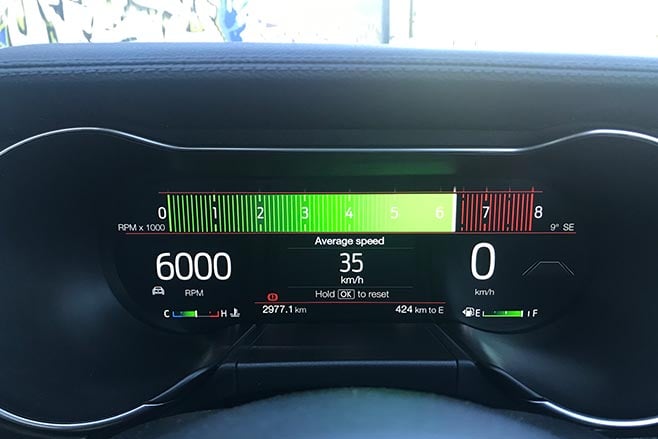
One surprising outcome of the Mustang’s track excursion is its fuel use; it might have only 2261cc to play with but it still swallows plenty of dinosaur juice, the onboard computer showing 35-36L/100km even in the wet conditions.
All in all, though, the 2.3 HP impressed; so much so that I’d go so far as to say it might be the pick of the non-Shelby Mustangs for track work. Or I would if the recently announced Mach 1 hadn’t blown that idea away.
That might seem crazy but the auto GT’s temperature sensitivity is well-documented and the manual V8s’ gearing is unsuitable for most tracks, though the R-Spec’s huge grunt certainly helps. Regardless, the fact the thought occurred at all shows the HP’s quality.
No, it’s not a Cayman GT4 or even a Honda Civic Type R, but was it fun and would I happily spend another day at the track in it? Yes on both counts. Next month it’s goodbye turbo and hello V8.

Things we’re loving
- Brakes hold up well
- Oversteer
- Gearing
- Front-end push
- Thirsty beast
- No Michelins
Month 4: Swap Meet
Four becomes eight as the 2.3’s big brother arrives

Changeover time. I’ve enjoyed my time with the Ford Mustang 2.3 High Performance.
Whether I’d recommend someone hand over more than $60,000 for the pleasure is something I’ll get to later, but I’ve enjoyed it enough that as I return to Ford to swap it for its big brother, I wonder, “obviously eight cylinders are nice, but objectively do you really need more Mustang than this?”
This thought lasts roughly 1.7sec into GT ‘ownership’, or about as long as it takes to press the starter button and for the 5.0-litre Coyote V8 to fire into life.
The result is a short, deep bark from the exhaust that elicits an involuntary giggle, the car rocking gently as it settles to idle. On the dozens of occasions I started the 2.3 HP, it didn’t once prompt this reaction. That’s the power of eight.
As you can probably see from the pictures, the new MOTOR Mustang is very similar to the old one. Like the 2.3 HP that preceded it, it’s a six-speed manual coupe finished in Grabber Lime and optioned with MagneRide suspension and Recaro seats.
In addition, the GT has the Black Shadow Pack, an MY2020 introduction that, as the name suggests, turns the wheels, roof, badging and stripes black. It’s menacing; I like it.
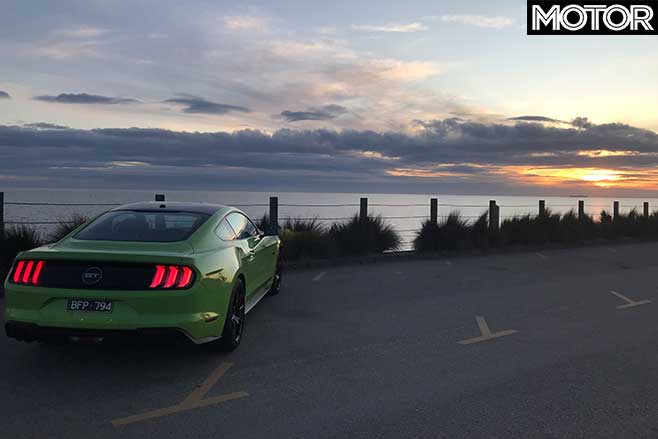
It’s also amazing how much an extra half-inch of rear-wheel width helps a car’s stance, the staggered rims of the GT (9.0-inch front, 9.5-inch rear) giving a tougher look than the 2.3 HP, which wears 19 by 9.0s at both ends.
The high spec is reflected in the price, the standard car’s $64,190 increased to $71,590 (before on-roads) courtesy of the suspension ($2750), seats ($3000), styling ($1000) and paint ($650).
Being similarly specced the 2.3 High Performance’s price is equally swollen, its standard $51,490 ask pumped to $57,890 (before on-roads). That’s quite a lot for a four-cylinder Mustang; in fact it would have scored you a lightly optioned GT at its 2015 launch.
The basic price is very reasonable when you consider how much has been upgraded since the first Ecoboost arrived at $45,990 (engine, interior, brakes, suspension, wheels and more), but the elephant in the room is the existence of used FM-series GTs.

Barely-driven manual GTs are readily available for around $45,000 and while there is peace of mind in owning a new car, particularly now Ford offers a five-year warranty, it’s difficult to imagine a Mustang creating too many problems with 10,000-20,000km on the clock.
Speaking of GTs, you’re probably expecting me to now explain how the V8 is clearly superior to its four-cylinder sibling in every respect.
Not quite. Time behind the wheel has sadly been quite limited due to living in the heart of Melbourne’s Stage 4 lockdown zone. As such its travels have been exclusively in an urban environment.
From a purely practical perspective there’s little to complain about; like in the 2.3 High Performance, the adaptive dampers offer an excellent ride, the six-speed manual ’box is slick and the clutch is light, while the V8’s burble is an ever-present companion, particularly on the overrun as it gurgles away.
From an enthusiast’s point of view, however, it is slightly frustrating.
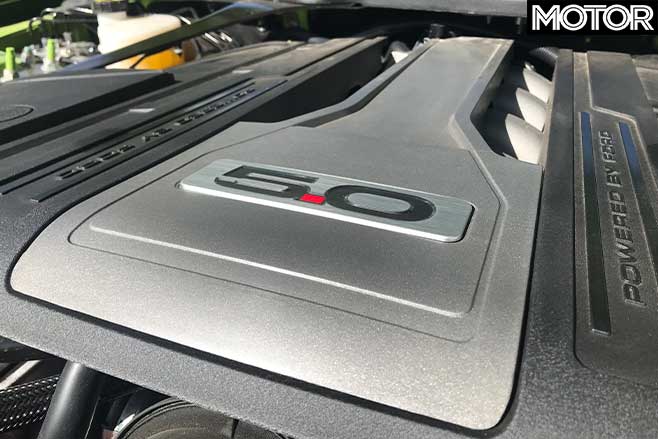
The problem is the gearing, or more accurately the diff ratio. Both the 2.3 HP and the GT use a Getrag MT82 (ratios 3.237, 2.104, 1.422, 1.0, 0.814 and 0.622 for 1st-6th respectively, if you’re curious) and a 3.55:1 diff, which is slightly odd given the two engines have completely different power curves.
As mentioned in previous updates, the gearing works brilliantly for the four-cylinder, which produces its grunt between 2500-5500rpm, but shift that curve to 4500-7500rpm and there’s a problem.
There’s no such thing as a quick rip through the gears in a manual Mustang GT. The upgraded engine introduced in MY18 is a monster but when first gear stretches to 86km/h and second 133km/h it feels lazy at low rpm and then you’re out of speed limit (110km/h reached at 6200rpm in second gear) just as it really starts to sing.
Aussie ’Stangs score all the juicy bits from the US Performance Package (wider wheels, bigger brakes, Michelin tyres) bar the shorter 3.73 diff, though it really needs a 4.1. Whether the gearing fades from memory on the open road we’ll discover next month!
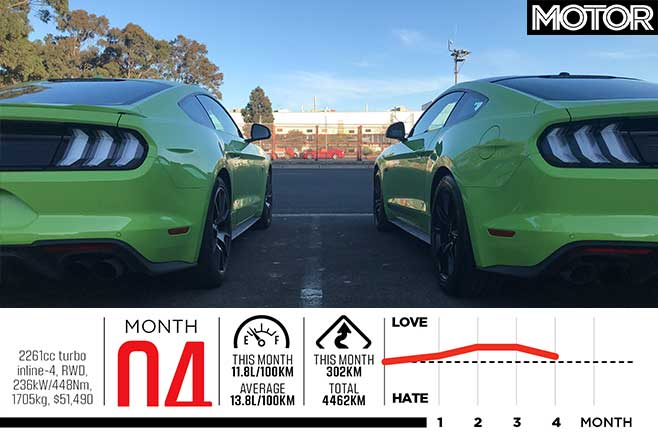
Things we’re loving
- V8 rumble
- Black Shadow Pack
- Top end power
- Tall gearing
- Bigger fuel bills
- Can’t drive it
Month 5: Horse Play
Loosening the reins on our new V8 long-termer
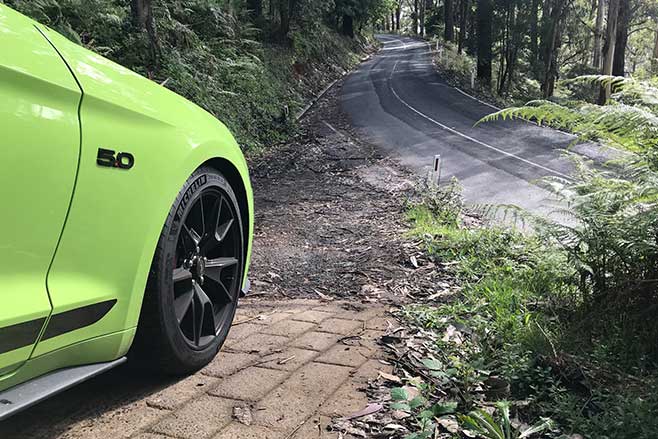
One of the great joys of a manual is that each requires its own rhythm and I’m finally learning this one’s.Achieving a good shift is easy but a great one, a friction-less meshing of cogs, takes a little more finesse.
The key appears to be avoiding sudden movements with the pedals; don’t lift the throttle too quickly and don’t dip the clutch too quickly and vice versa. And don’t overlap the motions.
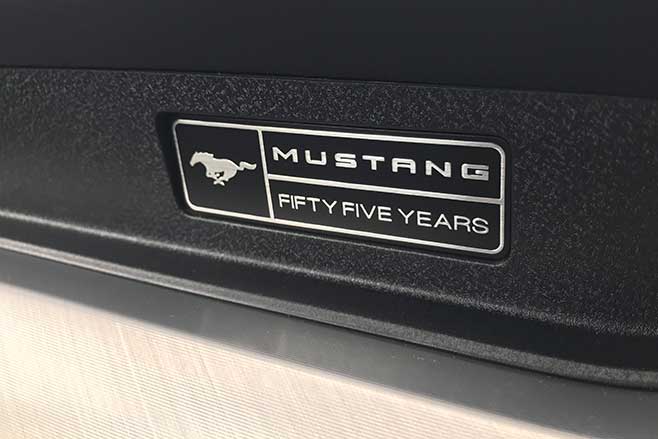
Or you can just turn the rev-match function on, but I turned it off with two minutes of picking up the car and haven’t re-activated it since. Feels like cheating.As mentioned in the last update, this month the Mustang is hitting the open road for a decent drive. It’s been a long time since I’ve driven a manual Mustang GT – properly driven, I mean.
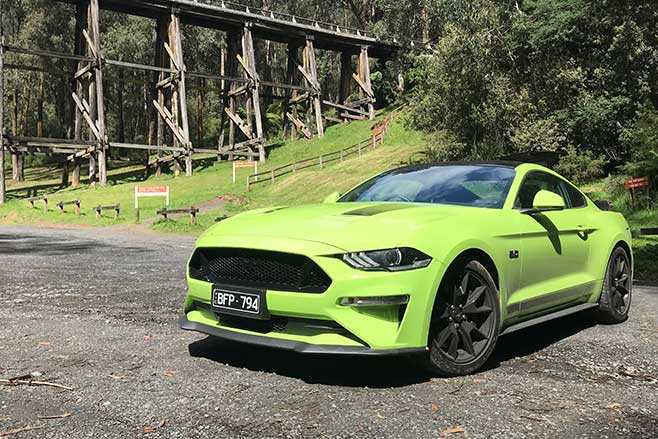
We haven’t really been driving at all, in fact, and as such I’m cognisant of the fact that the first car driven after an extended break is going to feel pretty swish.So with that in mind, I’ll start with a negative. The Mustang is quite noisy. Not in the traditional sense like wind noise or tyre roar, but mechanical noise.
Cross a series of small, pattery bumps – say, a rough railway line crossing or a potholed section of highway – and you become aware of noise from the suspension.
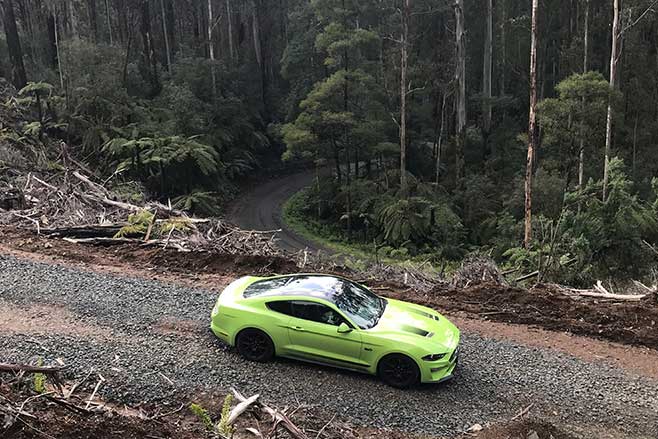
These are things that can be heard not felt and they might mean nothing, but if I’d just paid $70K+ for my new car I might raise them at the next service.Now for the positive: I’d forgotten how good, how capable, a Mustang GT is.
Forget all those tired cliches about muscle cars not being able to do corners or Mustangs throwing themselves into crowds, a hard-driven standard GT can set a pace on a twisty road that plenty would have plenty more fancied sports cars breaking a sweat.

The Michelin Pilot Sport 4S tyres have plenty of grip, the Performance Pack brakes that are standard on Aussie cars offer great stopping power, the chassis has decent balance and the suspension offers an impressive blend of compliance and body control, especially with the MagneRide dampers clicked to Sport. Dial back the traction control and the electronics will mostly leave you alone, too.The engine remains a monster, with heaps of grunt that continues to builds to build beyond 7000rpm and a pleasing soundtrack to accompany it.
The question posed last month was: would the super-long manual gearing dull the experience beyond the city limits like it does within them? The answer is yes and no.
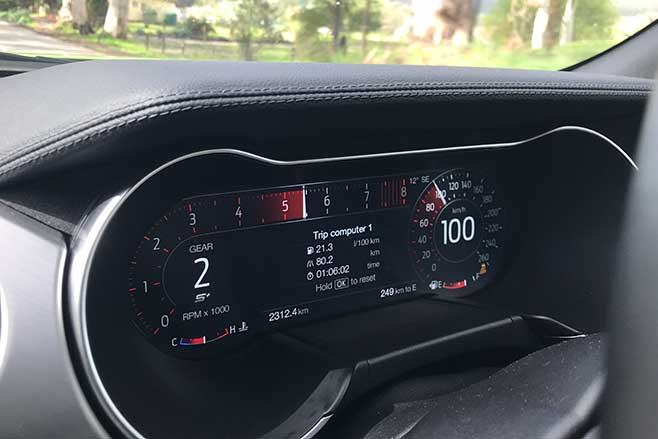
However, soon enough you starting looking for opportunities to go back to first in tight corners; this not only gives you an opportunity to use the gearbox, but puts you in the meat of the torque band on the shift to second.
It’s fun, though not as fun as, say, having the correct gearing in the first place.
Things we’re loving
- POWER!
- Handling poise
- Great shift
- Heavy so-and-so
- Gearing. Again
- Random noises
Month 6: Green Party
Mild modifications fulfil Mustang’s potential
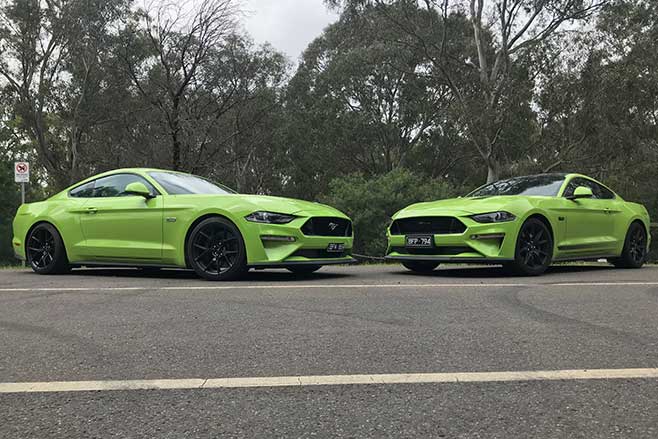
Just to refresh your memory, MOTOR’s long-term GT is a six-speed manual with MagneRide dampers, but it’s lower, fatter twin here is something a bit different.This isn’t the work of Ford. Instead, it’s owned by friend of MOTOR Bernie Quinn, the boss of engineering firm Premcar which has created the Miami supercharged V8, Nissan N-Trek Warrior, Holy Grail Falcon among many other things.
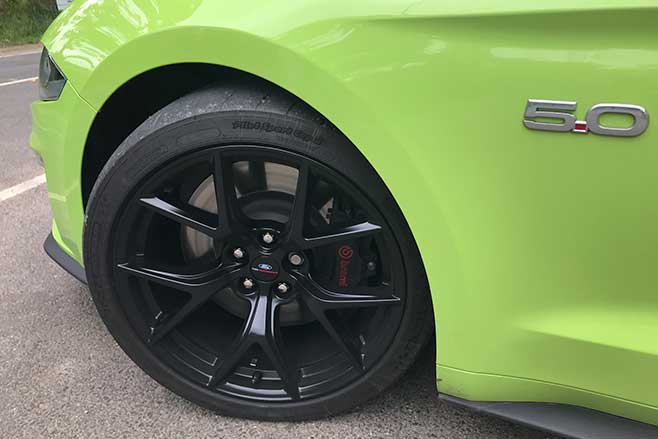
Melbourne company Shockworks has provided a new set of suspension but final and most intriguing modification can’t be seen at all.Regular readers will be familiar with my whinging about the standard V8 Mustang’s gearing. With good reason, because it’s ridiculously tall, robbing the awesome V8 of its punch and the driver of the opportunity to use the sweet shift.
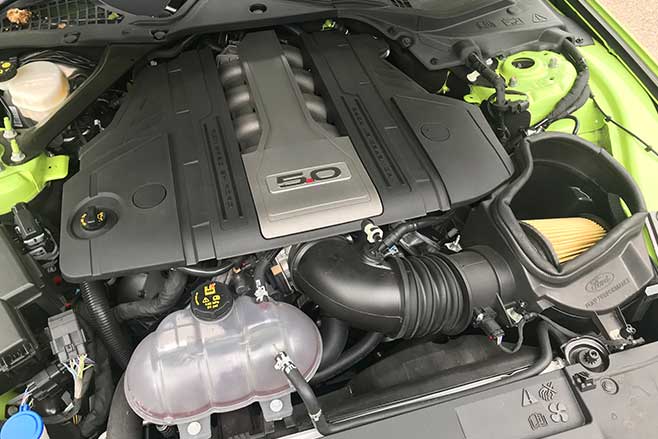
Plug in the wider tyres and new diff and these figures drop to: 71km/h (1st), 109km/h (2nd), 162km/h (3rd), 230km/h (4th), 283km/h (5th) and 370km/h (6th). Much more reasonable. And more fun.There is a certain appeal to the standard car, that feeling of gaining more and more speed as you wind each gear out for seconds at a time, but opportunities to do so on the public road are virtually non-existent.
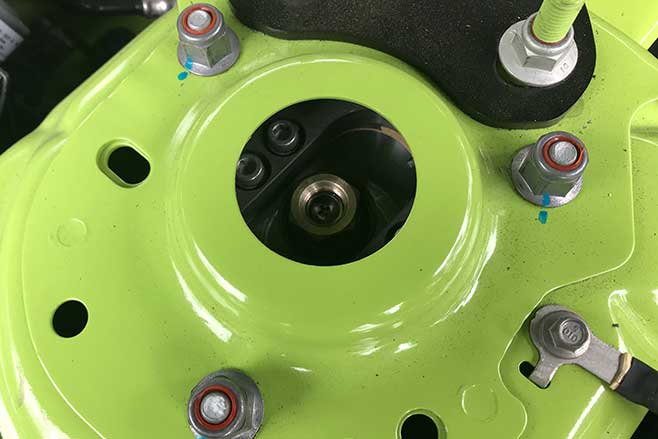
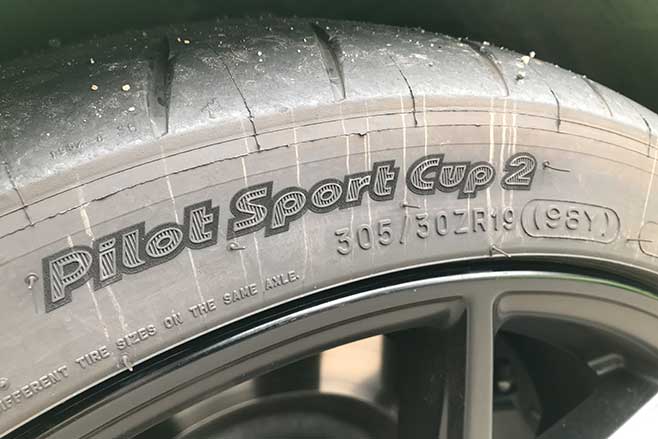
And you don’t even have to turn to the aftermarket. Bar the locally-sourced suspension all the bits come from the official Ford Performance catalogue; the 4.09:1 crown wheel and pinion is US$359, the rims US$1676 and the tyres from your local Michelin dealer.Next month we’ll test the GT’s mettle on track and maybe (hopefully) bring along its supercharged sibling for a spot of comparison. Stay tuned.
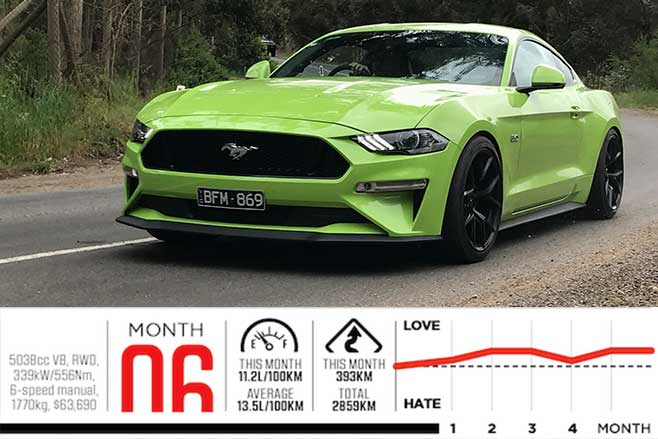
Things we’re loving
- Shorter gearing
- Parts catalogues
- Big, sticky tyres
- Scraping exhausts
- Tramlining
- Waiting for Mach 1


